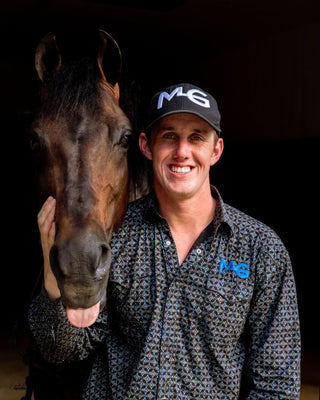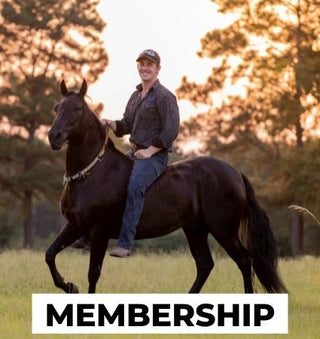Watch the Video Here or continue reading below!
Crossfiring is a common issue when cantering, where the horse picks up a different lead in the front and back. This imbalance makes the ride uncomfortable and often results from a lack of body control. In this guide, we'll break down the causes of crossfiring and provide practical steps to fix it.
What is Crossfiring?
Crossfiring occurs when a horse's front and hind legs are on different leads. Ideally, the front and back legs on the same side should lead together, creating a smooth gait. However, when crossfiring happens, one front leg and the opposite hind leg lead, making the canter rough and unbalanced.
Causes of Crossfiring
The majority of crossfiring cases stem from:
-
Lack of body control
-
Stiffness in the shoulders and hips
-
Incorrect setup when asking for the lead
-
Leaning or imbalance in movement
Before attempting to fix crossfiring, ensure your horse is responsive and moves easily off your aids. Going through groundwork exercises such as the Respect Series and removing the "e-brake" will set a solid foundation.
Preparing Your Horse for Success
-
Check Body Control
-
Ensure your horse moves off leg pressure fluidly.
-
Practice leg-yielding to improve flexibility.
-
Work on bending exercises to keep the horse soft and responsive.
-
-
Set the Correct Lead
-
When asking for a left lead, the horse’s nose and hips should be slightly left. For a right lead, they should be slightly right.
-
Keep the inside shoulder elevated to prevent falling in.
-
Fixing Crossfiring Step by Step
1. Establish Forward and Balanced Movement
Before working on leads, ensure your horse moves forward willingly while staying balanced.
-
Ask your horse to trot off while maintaining a soft frame.
-
Keep slight contact with the reins, preventing excessive pulling.
-
Encourage a relaxed head position for better control.
2. Work on Lateral Control
Teaching your horse to move off your leg laterally will significantly improve lead control.
-
Bring your horse off the rail and practice moving their shoulders over.
-
Use inside leg and rein to guide the horse’s body correctly.
-
Repeat the exercise until it becomes easy and natural.
3. Ask for the Correct Lead
When asking for a canter:
-
Ensure your horse is correctly bent in the direction of the lead.
-
Shift weight to the correct stirrup and use leg pressure accordingly.
-
Encourage engagement from the hindquarters to initiate the lead properly.
If the horse picks up the wrong lead or crossfires, go back to trot, correct the body positioning, and try again.
4. Improve Responsiveness with Transitions
Transitions help fix stiffness and balance issues.
-
Ask for smooth transitions between walk, trot, and canter.
-
Focus on keeping the horse’s head and shoulders straight.
-
If the horse leans in or falls out, correct it immediately.
5. Correct Leaning and Resistance
A common issue leading to crossfiring is leaning into the turn. To fix this:
-
Pick up the inside rein slightly to prevent dropping the shoulder.
-
Use leg pressure to maintain balance.
-
Encourage self-carriage rather than letting the horse lean on the bridle.
The End Goal: A Balanced, Responsive Horse
Rather than focusing solely on fixing crossfiring, improving overall body control will naturally resolve the issue. When your horse gives to the bridle, moves off leg pressure, and picks up leads correctly, crossfiring will disappear on its own.









